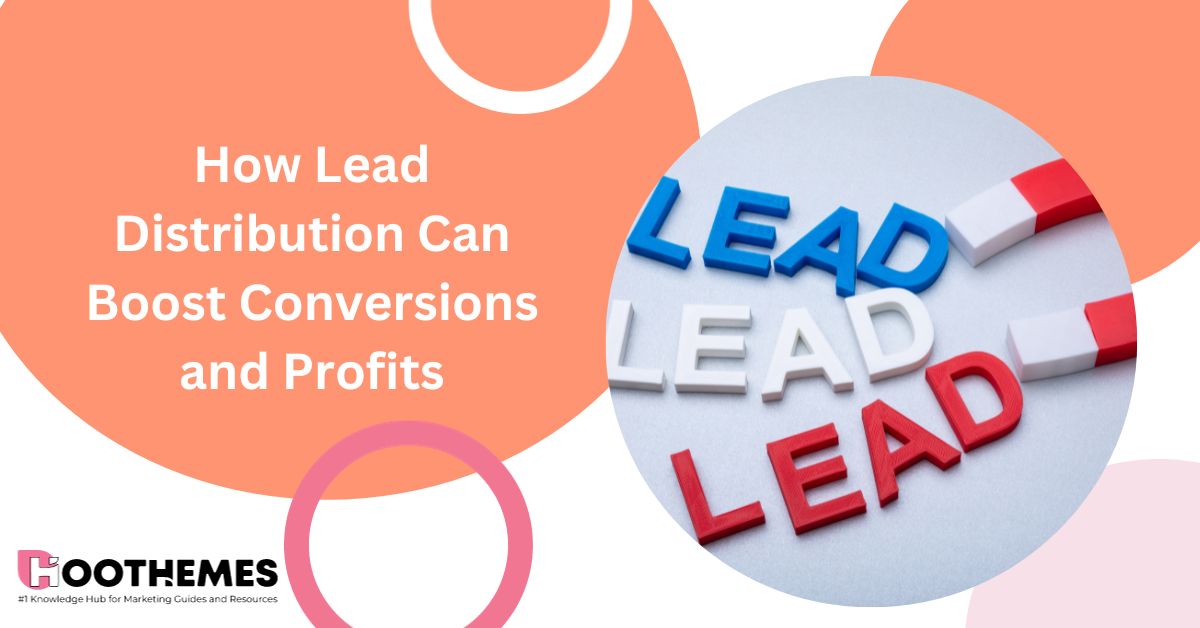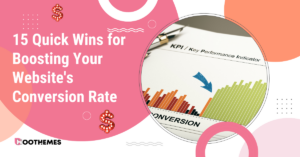Is your lead distribution falling short, even though you’re doing everything right? If that’s the case, it’s time to reevaluate your tech stack and the website, the crucial hub for all your leads.
Effective lead generation strategies have the power to drive entrepreneurial success. Implementing a smart approach to lead management and the right lead distribution system is a surefire way to optimize outreach strategies, develop compelling messaging, expand the customer base, and increase the company’s profit.
While marketers are no strangers to handling customer experiences and retaining high customer lifetime value, lead management is never as straightforward as it seems.
In this article, we’ll dive into the key aspects of website optimization for effective lead generation and lead distribution. Get ready to take your leads to the next level with these vital tips and insights.
But first, let’s talk a bit about leads and lead generation.
Lead Generation in a Nutshell
Just in case you have never heard of leads and lead generation, here’s what you need to know:
- A lead is a user interested in the company’s product. Leads typically take specific actions on the website, like submitting a request, adding items to the cart, requesting a callback, or filling out a form.
Regardless of the scenario, the single condition that turns an interest or an action into a lead is the ability to track it and contact the users afterward.
Whether they turn into sales depends on several factors, including the website usability, lead management process, and marketing efforts that follow.
Let’s quickly recap the basic ways to categorize leads based on their level of interest.
| Cold | Potential buyers who have yet to show interest. They’re at the top of the funnel and have either no familiarity with your brand or plan to get acquainted with it. |
| Warm | Users who have shown some level of interest in the product but haven’t made a final decision. They’re further down the funnel and might have visited your website and social media accounts or subscribed to your email newsletter. |
| Hot | These are nurtured warm leads that have journeyed down the funnel. Such users are typically ready to make a purchase right away. |
Leads can turn from warm to hot, cold to warm, and vice versa, meaning each phase demands a tailored approach, starting at the lead generation stage.
Ultimately, the company’s revenue will either grow or reduce depending on how well you devise your lead gen strategy.
Top 4 Lead Generation Strategies in 2023
Now, let’s move on to the most popular and effective lead generation methods.
#1 SEO
Helps increase organic traffic to the company’s website. It is one of the best methods of lead generation as it awakes natural user interest, allows you to obtain targeted visits, and is relatively cost-effective.
The only downside is that the initial results are only visible after several months of active SEO promotion.
#2 Contextual Advertising
This method lets you quickly gather leads through user clicks on targeted search queries. Contextual advertising can be configured for various web pages, including landing pages.
#3 SMM and Targeted Advertising
Active social media management aims to improve brand recognition and increase audience loyalty. Getting warm or hot leads can be achieved through posts with calls to action or links to target pages. You can also use targeted advertising to speed up results.
#4 Cross-Marketing
Partnering with a brand whose target audience customer needs align with yours is another effective lead generation method. Mutual exchange of website links and social media reposts help generate new leads.
#5 Gated Assets
Placing such publications increases the company’s visibility and attracts potential customers. To get targeted traffic, you must create relevant and useful content for your target audience, like eBooks, checklists, or guides.
#6 SMS, Email, and Push Campaigns
Targeted notifications are effective for warming up cold or warm leads who have already shown interest in the company but have not yet used its services.
Effective lead generation is possible if you are willing to test each of these methods. You can only find the optimal approaches that generate a steady stream of leads through trial and error.
By identifying which methods work and which do not, you can efficiently plan your time and budget and ultimately improve your lead generation.
Lead generation is an important component of a successful marketing strategy, but it’s not the only one. Lead distribution also plays a crucial role in ensuring maximum efficiency and effectiveness of marketing efforts. Let’s delve into this topic further.
What Is Lead Distribution?
It allows businesses to effectively connect consumers with the sales reps, brands, or products they’re looking for.
From strategic marketing channels to personalized offers, lead distribution systems enable companies to guide and match leads with the right sales representatives seamlessly.
On top of that, this process increases customer satisfaction and optimizes your conversion rates.
What is Lead Distribution?
The distribution process is typically automated. This particular feature helps avoid decision-making complexities and speed up the workflow.
Automated lead distribution ensures quick and efficient processing and prevents the loss of potential clients. Many small and growing companies use distribution systems to effectively manage incoming inquiries.
Importance of Lead Distribution for Your Website
Let’s start with several simple tips to help you make the most of your leadgen efforts. Here’s what you need to do to power your website for lead generation:
- Create and place lead generation forms. Make it a breeze for visitors to provide contact information by prominently placing user-friendly forms on your landing pages.
- Create captivating landing pages. Appealing and easy-to-navigate landing pages will help capture potential leads’ attention and drive conversions.
- Come up with compelling CTAs. Create standout, clear, and enticing CTAs and display them prominently across your website to convert more visitors into leads.
According to HubSpot, 50% of marketers consider lead generation the top priority of their marketing campaigns. Everyone aims to increase the number of leads, but few think about their proper distribution.
If a company doesn’t use a lead generation and distribution platform, it can create serious problems: managers will start competing for promising leads and may reject challenging ones. Lead distribution eliminates such situations, ensuring the best match between a sales representative and a potential client.
In B2B sales, automated lead distribution is paramount because this field involves dealing with a large volume of inquiries. Effective lead management ensures that all leads are properly tracked and nurtured, increasing the likelihood of successful sales.
If you want to optimize your website for lead generation and streamline the sales process, start by implementing one of the best distribution platforms. This will allow you to establish a seamless marketing-sales connection and convert hot leads into loyal customers without delays or setbacks.
Who Needs Lead Distribution
There is a myth that automated distribution systems are intended only for corporations. However, this is not the case. They are commonly used by:
- Small and growing B2B startups: Lead distribution allows them to balance the workload in the sales department and save limited resources without compromising quality. This way, managers can efficiently handle each inquiry without spending a lot of time on internal discussions.
- Small, medium-sized, and large businesses: Lead distribution enables them to process large inquiries and prevent disagreements, bottlenecks, and customer losses.
Ping post lead distribution is particularly useful for financial institutions, home services, software development, consulting, insurance, and manufacturing companies.
Since the competition for leads is high and the customers’ needs are often very specific, customer-centric companies have much to gain from these systems.
Common Lead Distribution Criteria
To introduce lead distribution software, you first need to establish internal criteria. The most commonly used criteria include:
| Criteria | Description |
| Lead Source | The lead distribution principle is based on where the leads came from. Possible sources may include feedback forms, social media, and more. This differentiation method allows managers to tailor their approach to customers based on their level of knowledge about the company and its products. |
| Lead Quality | Leads are assigned based on a scoring system that reflects the likelihood of successfully converting a potential client. Using this data, managers can set priorities and focus their efforts on leads with the highest probability of conversion. |
| Level of Interest | Leads are assigned based on their interest in a specific product. This criterion allows leads to be matched with managers with expertise and specialization in that particular product. Personalization helps provide better service and increases the likelihood of successful lead conversion. |
| Task | Lead distribution is based on the problem that needs to be solved. This allows managers who have dealt with similar clients to use their experience in similar cases. |
| Deal Value | If a potential client is interested in a premium offering, it is more advisable to direct them to a manager with experience handling high-value transactions. |
Lead Distribution in Practice
To set up and automate this system, you need to take a series of specific actions:
- Assign responsible individuals. Examine the strengths and weaknesses of each team member to allocate areas of responsibility correctly.
- Establish a priority system. If you have a high volume of inquiries, you can combine various routing criteria. Leads with high scores should always be the top priority, as they have a high level of interest and are potentially more profitable.
- Automate the process. You can select the best lead distribution software after developing a clear strategy. Most CRM systems have basic functionality, but you can significantly expand it with integrations.
- Monitor progress. It’s essential to track the movement of potential clients through the sales funnel and optimize the lead distribution process based on this information.
- Communicate with the sales department. Ensure managers understand how leads are assigned and distributed. Request feedback and make adjustments as you receive more information from the team. Clear communication is necessary to avoid confusion and ensure the efficient movement of potential clients through the funnel.
Wrapping Up
Lead distribution is great for optimizing sales and increasing profitability. Its use benefits both small companies, startups, and medium and large businesses.
Implementing specialized software will help effectively solve the problem of lead distribution. The most suitable option for firms working in the sphere where competition for leads is very high is ping post software.
A strategic approach to lead generation and distribution helps businesses achieve higher efficiency, increase conversion rates, and strengthen customer relationships, ultimately contributing to the development and successful promotion in the market.

